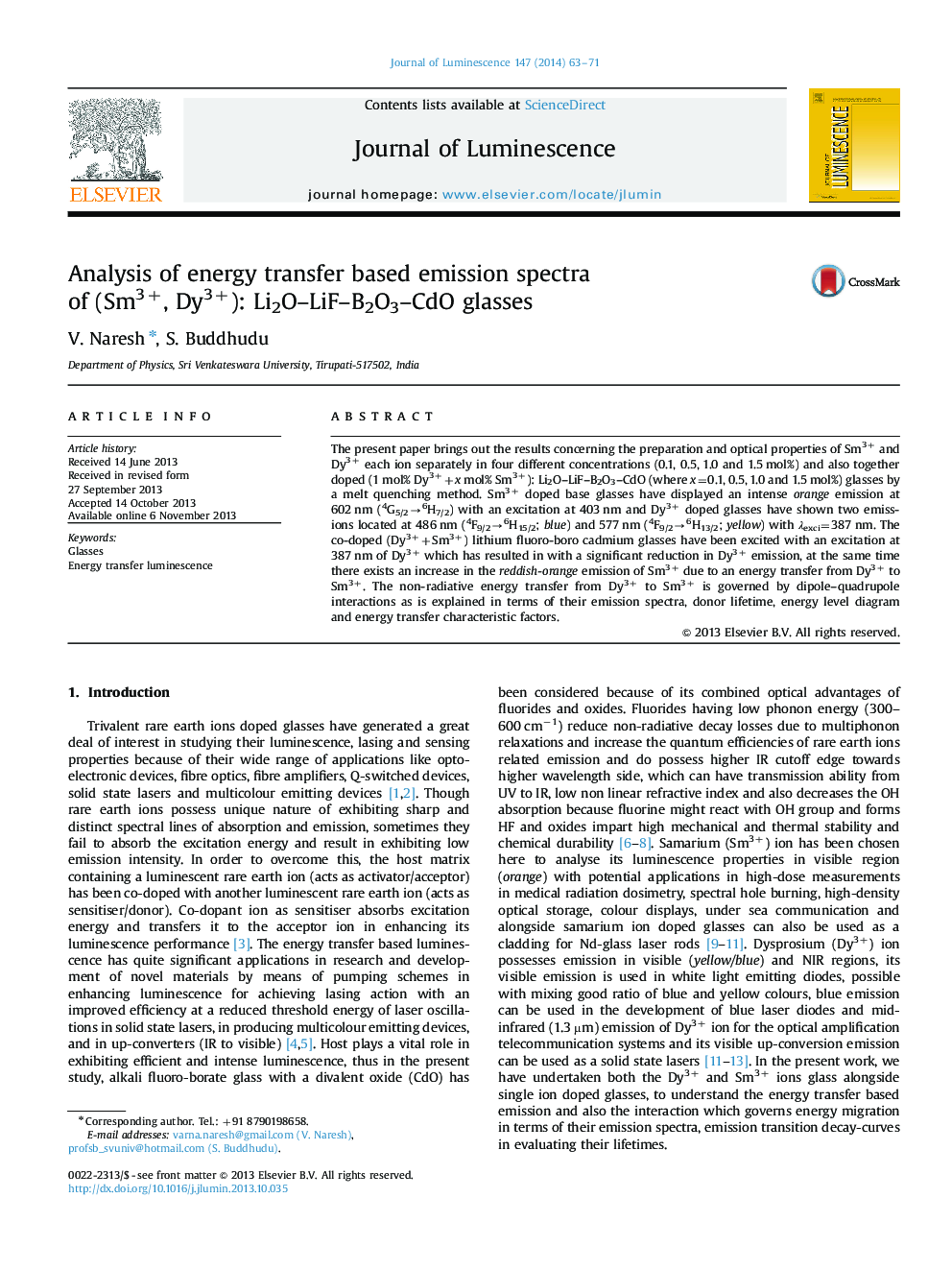| Article ID | Journal | Published Year | Pages | File Type |
|---|---|---|---|---|
| 5400026 | Journal of Luminescence | 2014 | 9 Pages |
Abstract
The present paper brings out the results concerning the preparation and optical properties of Sm3+ and Dy3+ each ion separately in four different concentrations (0.1, 0.5, 1.0 and 1.5 mol%) and also together doped (1 mol% Dy3++x mol% Sm3+): Li2O-LiF-B2O3-CdO (where x=0.1, 0.5, 1.0 and 1.5 mol%) glasses by a melt quenching method. Sm3+ doped base glasses have displayed an intense orange emission at 602 nm (4G5/2â6H7/2) with an excitation at 403 nm and Dy3+ doped glasses have shown two emissions located at 486 nm (4F9/2â6H15/2; blue) and 577 nm (4F9/2â6H13/2; yellow) with λexci=387 nm. The co-doped (Dy3++Sm3+) lithium fluoro-boro cadmium glasses have been excited with an excitation at 387 nm of Dy3+ which has resulted in with a significant reduction in Dy3+ emission, at the same time there exists an increase in the reddish-orange emission of Sm3+ due to an energy transfer from Dy3+ to Sm3+. The non-radiative energy transfer from Dy3+ to Sm3+ is governed by dipole-quadrupole interactions as is explained in terms of their emission spectra, donor lifetime, energy level diagram and energy transfer characteristic factors.
Keywords
Related Topics
Physical Sciences and Engineering
Chemistry
Physical and Theoretical Chemistry
Authors
V. Naresh, S. Buddhudu,
